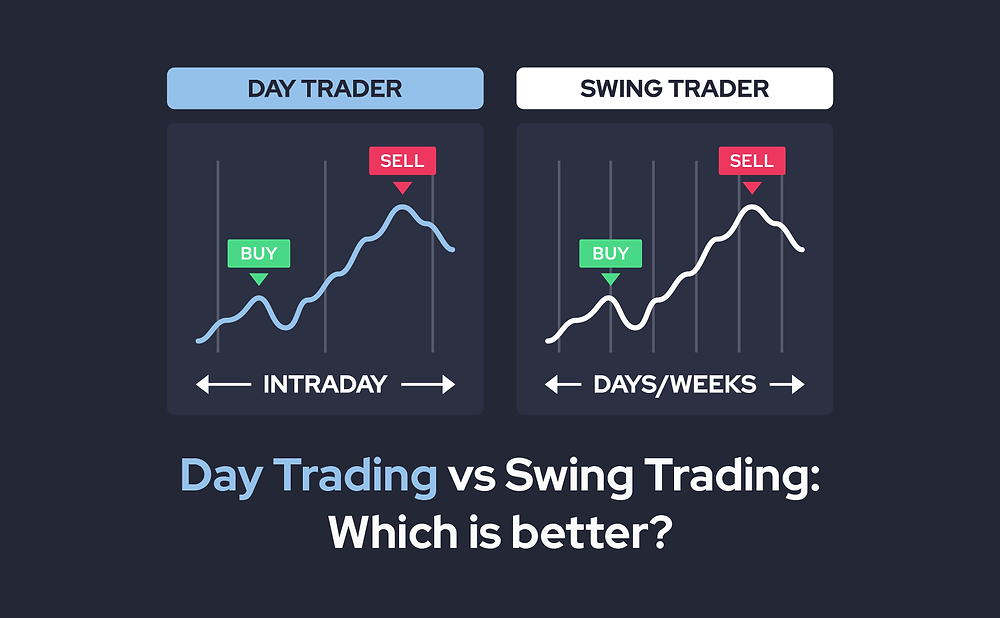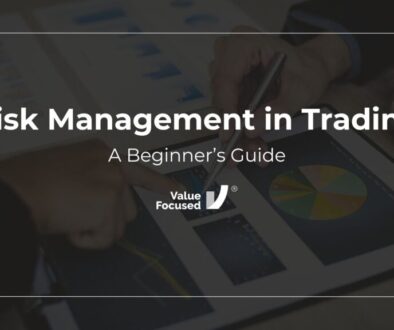Master Swing Trading Strategies for Profitable Investments
Swing trading is an exciting way to make money in any market. Swing trading may be a good option if you’re a savvy investor looking to capitalize on short-term price movements. In this dynamic trading strategy, you can gain flexibility and potential profits without having to monitor the market constantly or hold positions for extended periods of time.
In this blog post, we’ll explore what makes swing trading different from other strategies, highlight the importance of having a well-defined plan, discuss how to identify potential swing trades, delve into strategies for entering and exiting trades effectively, provide tips for managing risk in swing trading, and ultimately help you determine if this approach is right for you. Join us as we discover the secrets of profitable swing trading!
What Makes Swing Trading Different from Other Trading Strategies?

What sets swing trading apart from other trading strategies? Let’s dive into the unique characteristics that make swing trading popular among traders.
Unlike day trading, which involves making multiple trades within a day, swing traders aim to capture short-term price movements over several days or weeks. This longer time frame allows for more flexibility and reduces the pressure of constantly monitoring the markets.
Another key difference is that swing traders focus on capturing intermediate trends rather than trying to predict long-term market movements. By analyzing technical indicators and patterns, they seek to identify stocks or currencies likely to experience price swings shortly.
Furthermore, swing traders often use a combination of fundamental and technical analysis. While fundamental analysis helps assess the underlying value of an asset, technical analysis provides insights into its historical price patterns and momentum. This holistic approach enables swing traders to make informed decisions based on quantitative and qualitative factors.
In addition, risk management plays a crucial role in swing trading. Traders carefully determine their entry points based on support and resistance levels while setting stop-loss orders to protect against potential losses. This disciplined approach helps manage risk effectively while maximizing profit potential.
Patience is a virtue in swing trading. Unlike day traders who thrive on quick gains, swing traders patiently wait for their trades to act according to their plan. They understand that only some trades will be successful, but they can achieve consistent profits by sticking to their strategy over time.
Swing trading stands out because it emphasizes capturing short-term trends with careful planning and risk management strategies in place. Whether you’re new to trading or an experienced investor looking for alternative strategies, exploring the world of swing trading could unlock new profit opportunities for you!
Tips for Successful Swing Trading

1. Develop a Trading Plan:
Before diving into swing trading, creating a well-thought-out trading plan is essential. This should include your goals, risk tolerance, entry and exit strategies, and trade management rules. Having a plan will help you stay disciplined and avoid making impulsive decisions based on emotions.
2. Use Technical Analysis:
Swing traders rely heavily on technical analysis to identify potential trade setups. Learn how to read charts and use indicators like moving averages, MACD, or RSI to spot trends or reversals in the market. This will give you an edge in finding high-probability trades.
3. Set Realistic Targets:
Setting realistic profit targets when swing trading is important. Expect only some trades to be a home run; aim for consistent singles and doubles that add up over time. Remember that preserving capital is just as crucial as making profits.
4. Manage Risk Effectively:
Implementing proper risk management techniques is vital in swing trading. Determine your position size based on your risk tolerance, and never risk more than you can afford to lose on any single trade.
5. Timing is Key:
Timing plays a significant role in swing trading success. Look for opportunities for momentum building or potential breakouts at key support or resistance levels.
6. Be Patient:
Swing trading requires patience – don’t rush into trades just because you need to be active in the market constantly. Don’t force trades if no clear setups are available; wait for high-quality opportunities with favorable risk-to-reward ratios.
7. Utilize Stop Loss Orders:
Always use stop-loss orders when entering swing trades. This will help protect your capital from excessive losses if the trade goes against you. Setting stop-loss orders at logical levels ensures that emotions do not influence your decision-making process during volatile periods.
Conclusion: Is Swing Trading Right for You?

After exploring the world of swing trading and understanding its strategies, it’s time to determine if this trading approach is right for you. While swing trading offers exciting profit opportunities in any market, it may not suit everyone.
Swing trading requires a certain level of commitment and discipline. It demands active monitoring of charts and market conditions and quick decisions on when to enter or exit trades. If you enjoy analyzing data, keeping up with market trends, and are comfortable with taking calculated risks, swing trading is an ideal fit for your investment goals.
However, swing trading may not align with your objectives if you prefer a more long-term investment strategy or do not have the time to actively manage your trades regularly.
Before diving into swing trading, take some time to educate yourself about different strategies and risk management techniques. Consider starting with a demo account or using paper trading methods to practice without real money at stake. This will allow you to test various approaches and gain confidence before committing capital.
Remember that no strategy guarantees success in the unpredictable world of financial markets. Having realistic expectations and understanding that losses are part of the game is crucial. As you gain experience and refine your skills, you can increase your chances of achieving profitable results through swing trading.
Whether swing trading is right depends on your preferences, goals, risk tolerance levels, and dedication to learning this particular approach thoroughly.
So go ahead – explore the realm of swing trading if it resonates with you! With careful planning, research, and practice, it presents significant profit potential while offering an exciting journey through dynamic markets!




